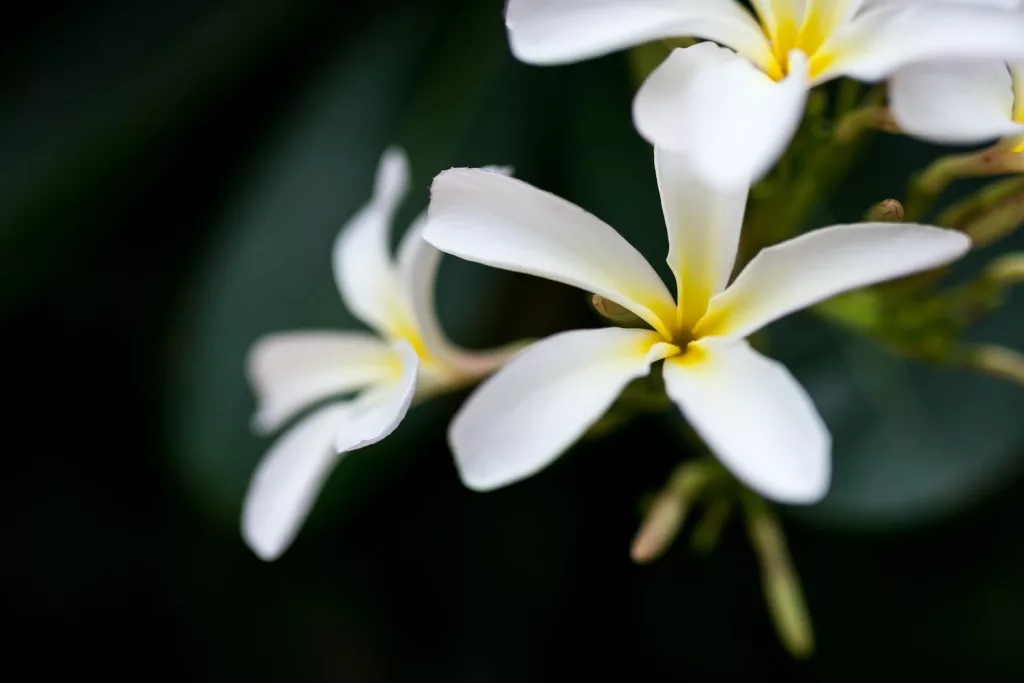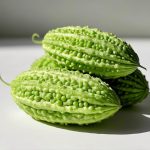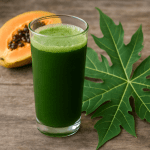Have you ever heard of Temple Tree before? When was the last time you came across one of these? Did you know that it has a wide range of applications in the medical field?
Plumeria, also known as Frangipani, is the common name for 7-8 different species of tropical and subtropical American flowers. Native to Mexico and Central America, plumeria has spread to all tropical regions of the world, including Hawaii, where it is now so common that many people mistake it for a native species.
Most species within the genus are deciduous trees and shrubs. This plant is a crooked, medium-sized deciduous tree with fleshy, latex-filled branches. The leaves are large, stiff and glossy and are clustered in a crown.
The bark is smooth and papery. It’s a spreading tree that can reach a height of 7-8 metres and is covered with fragrant frangipani flowers, which become even more fragrant when picked. The flowers have five petals and come in a variety of colours. It needs at least six hours of direct sunlight a day for optimum development and flowering.

How does the use of a Temple Tree contribute to one’s overall health?
- Reduces the severity of a fever.
- Treats asthma effectively and also helps prevent it.
- Heal the wounds.
- Reduces the inflammation and pain associated with rheumatism.
How exactly should one go about employing Temple Tree as an alternative form of treatment?
- Asthma can be treated or prevented with decoctions made from the bark of the tree, which are also used to bring down the temperature of the body. The therapeutic qualities can be found in both the bark and the leaves of the plant.
- A decoction that is prepared from the root can be used as a treatment for open wounds.
- The milky latex of the plant, when combined with coconut oil, can be massaged into joints to alleviate the pain caused by rheumatoid arthritis.
- A compress that is produced from heated leaves is applied to the affected area in order to minimize edema.
Due to its low cold tolerance, Plumeria is usually grown indoors or in containers in regions with milder climates. It is possible to bring the plant indoors to overwinter in regions that have warm temperatures for most of the year but still have cold winters.
Alternatively, when the weather starts to cool in the autumn, you can bury container-grown plumeria and bring them indoors. It’s best to keep them indoors until spring, when the weather is reliably warm enough to move them outdoors again. Cactus mix, perlite and sand, or any coarse potting mix that allows good drainage will work well for plumeria plants
Frangipani flowers are worn by women in modern Polynesian culture to convey their relationship status. The flower is placed over the right ear if the wearer is available for a romantic relationship, and over the left ear if she is not.
The frangipani tree is considered sacred in India because it continues to grow new leaves and flowers even after being uprooted. It is a common sight in cemeteries and temple grounds, where the daily rain of flowers beautifies the graves.
Disclaimer: This is for informational purposes only.
Did you find this helpful? Let us know in the comments.
You can also visit our Facebook and YouTube pages to know more about plants and their health benefits.
You might also like:
- Problem With Rheumatism? It’s Best To Avoid These 5 Foods
- The Health Benefits Of Watermelon That Will Brighten Your Day
- The Interesting Health Benefits Of Crimson Ipomoea
- 8 Amazing Role Of Balloon Vine In Inducing Nausea And Vomiting
- Benefits Of Herbal Tea: These Amazing Herbal Tea Will Brighten Your Day








